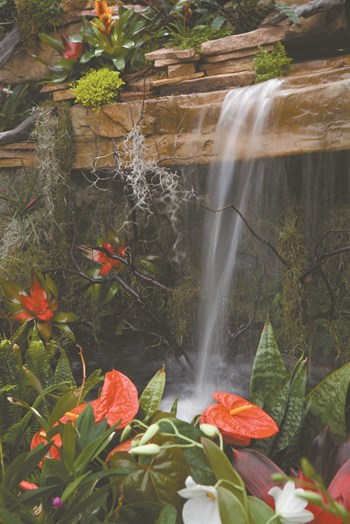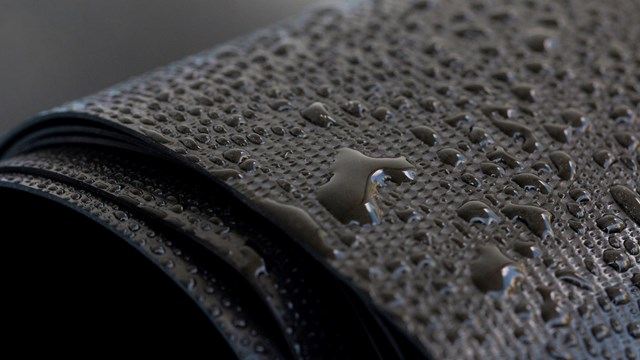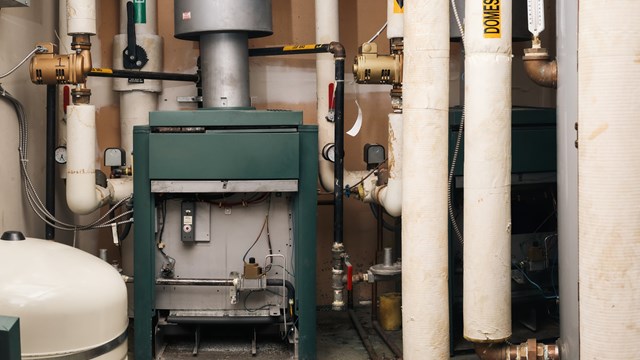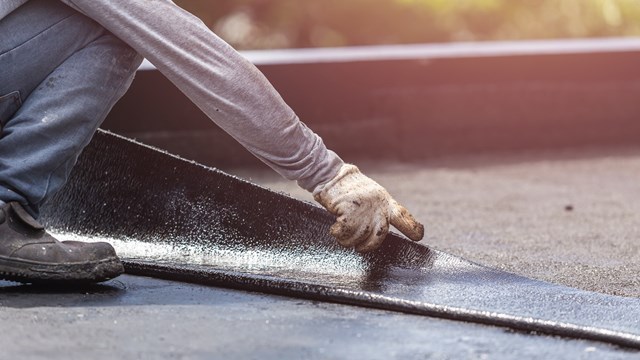
Whether indoors or out, few design elements are as dramatic and arresting as a waterfall or fountain. According to the blog The Bowery Boys, the very first decorative fountain in New York City was the City Hall fountain, unveiled on October 14, 1842 during opening ceremonies for the Croton Aqueduct. The fountain propelled water 50 feet into the air, and was a huge hit.
A Value-Added Proposition
Water features can add beauty and value to a property, both outside and inside the lobby and common areas–and they certainly don't need to be as big as the City Hall geyser to make an impression on residents and visitors alike. They can take the form of gently cascading water walls, koi ponds, fountains or reflecting pools as well.
Whichever water feature is displayed, they require special care and maintenance in order to remain attractive, hygienic and safe.
“A water feature is basically a signature piece or focal point for the building,” says Dan Euser, a landscape architect with Dan Euser Waterarchitecture Inc., in Richmond Hill, Ontario. “Some are an interactive type of water play, while others are just for the pleasant sound or reflective qualities, or even to mask the public sounds. There are so many different ways it’s done or used.”
Manhattan-based AKAM Associates, Inc. manages a number of properties that include indoor and/or outdoor water features, such as moats, ponds, koi ponds, cascade walls, and decorative sculptures. “With the advent of the greening movement, ‘green walls’ have become a popular design element in buildings too,” says Doug Weinstein, AKAM's director of operations.
A green wall is a wall, either free-standing or part of a building that is partially or completely covered with vegetation or an inorganic growing medium. It’s also known as a ‘living wall.’
Euser says that today the pools are getting shallower and designers are getting more creative. “Now you see walls squirting, interfacing with video, who knows,” he says. “Condos are not super high-end generally as far as water features are concerned, as opposed to museums or civic centers, but it does depend on how much space is available.”
Like most industries, technology has changed in the water industry as well. “In the past, the equipment systems were very large, but today they are a fraction of what they used to be,” says Alex Kosovsky, who is president of Aqua Design Group Inc. International in Brooklyn. “The pumps are smaller, use less power and just work better. Efficiency has improved a lot over the years, which is a big factor. The feature won’t cost your building as much to run and today a lot of people are concerned about that.”
Decisions, Decisions
When you think of a water feature, you probably think of a three-tier fountain, but today there are more water features to choose from,” says Kosovsky. “There are calming reflection pools—still bodies of water—that you’ll find in large plazas and interior lobbies. They are sometimes used as a sound buffer too. Fountains are also used as a buffer in large public plazas where you have a large amount of people to avoid hearing chit-chat.”
Kosovsky says that some clients have asked for replications of famous fountains, including the popular baroque styles from the 1930s and even the fountain from St. Peter’s Square. “There’s a challenge to each and every project.”
Although fun and interesting to look at, koi ponds are not so popular for condo and co-op buildings. “They are used more in entertainment venues, such as a sushi restaurant where there is an elevated glass floor,” he says. “The Wynn Las Vegas Hotel has one in a guest private entrance, but koi ponds are not really for residential properties. There’s heavy maintenance involved because the fish need to be fed and the water needs to be cleaned.”
When choosing a water feature, Euser says there are several aspects to think about. “You’re looking at mechanics, structure, finishes and waterproofing and they all have to marry together to make it work,” he says. “There’s an artistic element to it, but you also need to worry about structure. For example, if the building has a roof terrace and you want to put it a water feature up there, how do you make sure you’re not leaking to the floor below? An interior water feature can get very noisy, so you have to be careful on what kind of noise is acceptable.”
For example, choosing a fountain for the building’s common area will be determined by the style of the building. “A traditional building should go with something more traditional, while a modern building should go with something more striking, such as a black granite monolithic reflecting pool,” says Kosovsky.
When Kosovsky works with clients, they may tell him what they want, but the ultimate decision will depend on space, conditions and the phase of the building. “It’s hard to put in a large water feature that’s going to function properly in an existing building,” he says. “They require draining, electric and utilities and most likely you have to chop up the floor.”
Weinstein agrees. “The most common issues occur when existing buildings wish to be retrofitted with a water element,” he says. “These include structural, water supply and drainage issues. The most important consideration is the waterproofing of any adjacent space such as a basement, garage, etc. The basic difference is that an indoor water feature is usually less complex as it’s closer to existing services such as water and electric. An outdoor feature requires these services to be brought from a greater distance to the area.”
He says that it’s easier to install water features in a new building by working with an architect from the ground up. “They would hire us as a design consultant and create a feature that would complement the surroundings and marry into the whole design. During that stage, you can figure all the electric and it can be set forth on the drawings. However, there are buildings where the water features are installed during renovations.”
For indoor water features, the approval process is typically confined to plumbing approvals. “For outdoor water features, depending on placement, further approvals may be required, especially if the area involved is also deemed a public space as some buildings’ plazas are,” says Weinstein.
Water features are exquisite to look at, but do require maintenance to prevent leaks, algae growth and insects. “Today’s systems are designed with filtration and usually accompanied with a sanitizing system, a water treatment plant that sanitizes the water and chlorinates it,” says Kosovsky. “There are other systems, including chlorinators, sterilizers and ozonizers that take care of the water too. The staff cleans the filters; it’s very minimal. If they are designed correctly, the maintenance can be quite simple.”
That doesn’t mean that there aren’t going to be problems, so proper waterproofing is paramount. “Leaks caused by sub-par waterproofing are by far the primary concern, followed by adequate filtration,” says Weinstein. “That said, algae growth has become less of a concern as treatment chemicals have gotten better.”
Maintenance Required
He also says that the building staff should be instructed to remove, on a daily basis and as-needed basis throughout the day, any debris, dead plant matter, and of course the occasional penny people love to throw in,” says Weinstein. “They must be trained to check the chemical balance of the water on a regular basis. All adjacent areas, especially those below the feature, should be inspected regularly for leaks.”
Seasonal maintenance applies most commonly to outdoor water features. “They need to be winterized to prevent damage to the structure and especially to the water pipes during colder months,” says Weinstein. “This involves draining the fountain, blowing out the lines to prevent pipe cracking, and depending on the type of equipment used, filling those lines with an antifreeze solution if they need to stay full. This work is usually better left to a professional service company.”
Some water features also have heaters that prevent them from freezing. “A heater prevents damage because ice cold water can hurt the equipment,” says Kosovsky.
Working with a qualified landscape architect is important in choosing the water feature that is installed properly and makes just the right statement.
Lisa Iannucci is a freelance writer and a frequent contributor to The Cooperator.









Leave a Comment